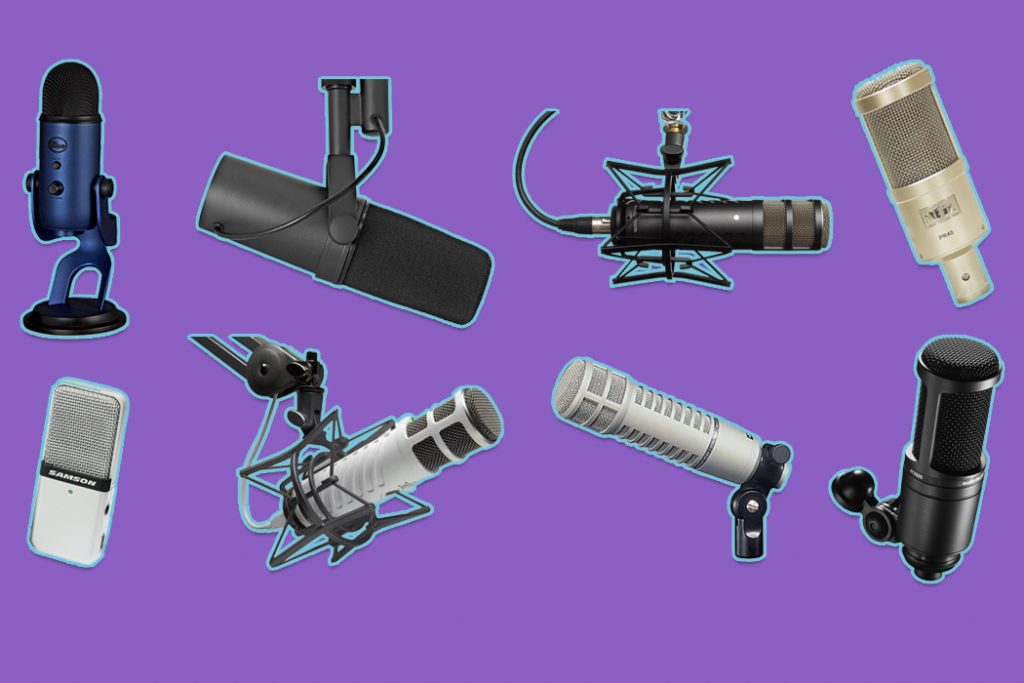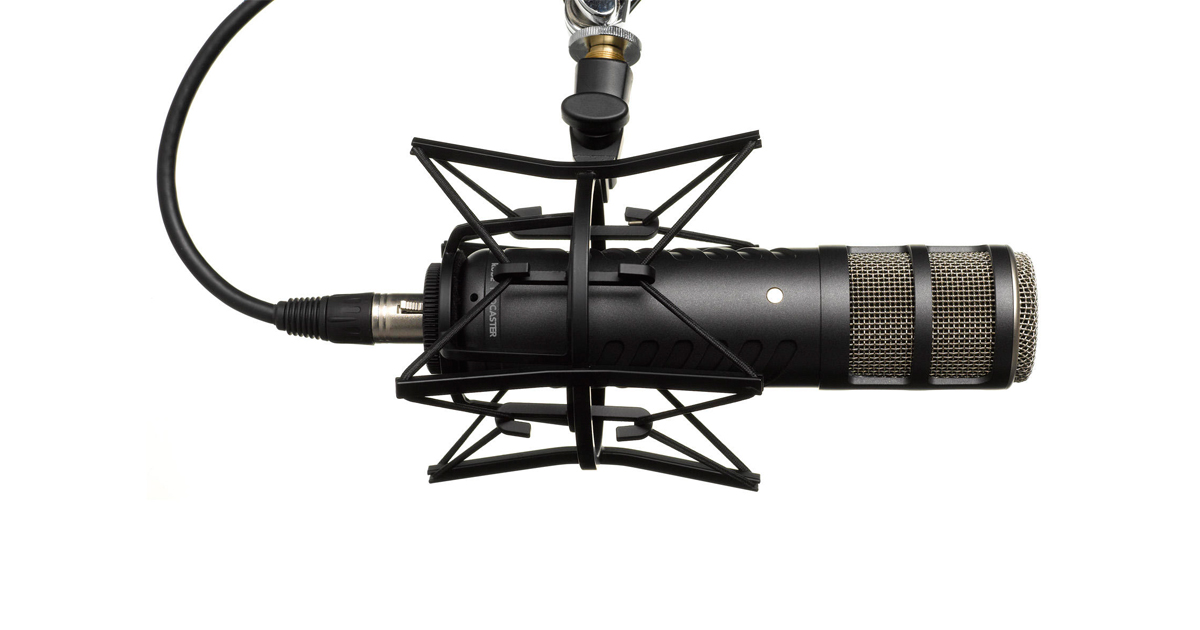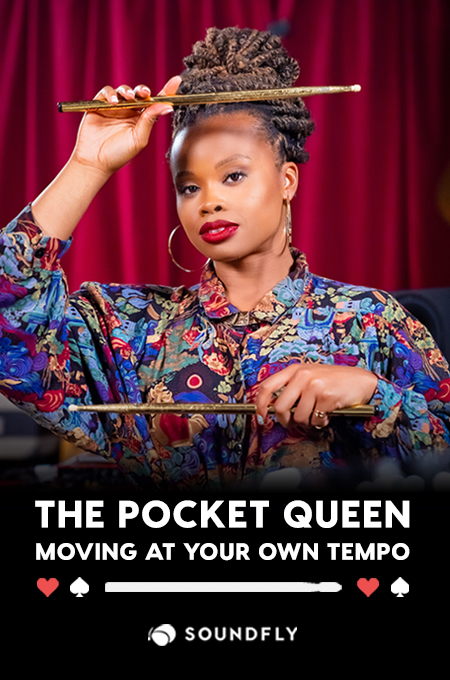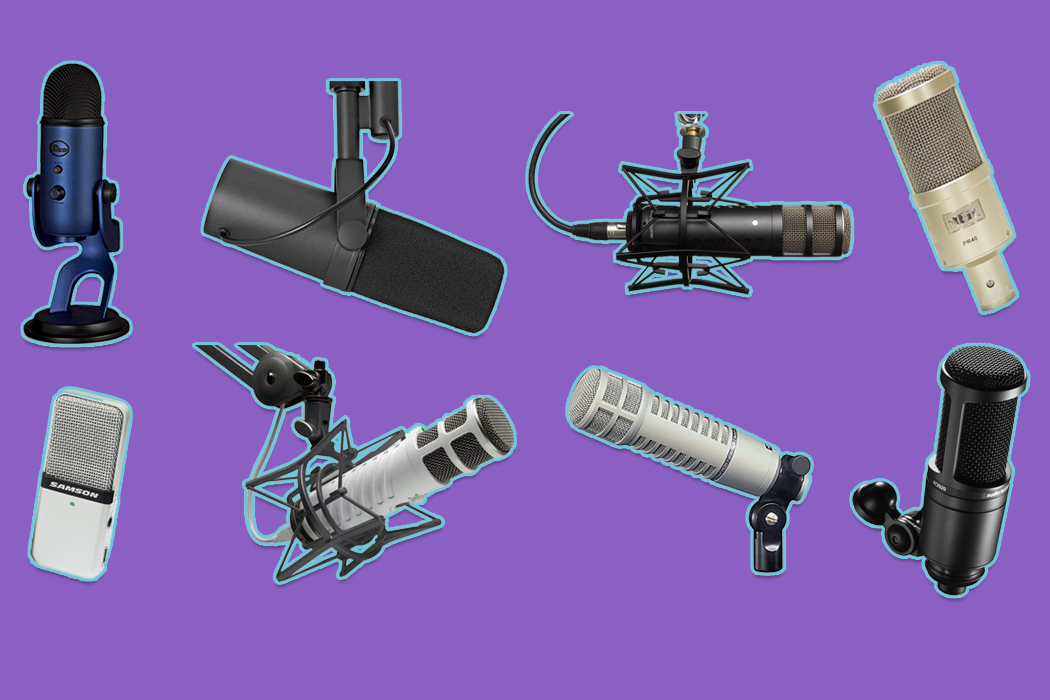
+ Welcome to Soundfly! We help curious musicians meet their goals with creative online courses. Whatever you want to learn, whenever you need to learn it. Subscribe now to start learning on the ’Fly.
With over 70 million monthly listeners worldwide now, podcasting is more popular than it’s ever been. According to a recent study, there are currently over 700,000 active podcasts. While that’s great news for podcast fans, that many choices makes it difficult for new podcasts to find their audience.
Nothing makes a listener hit the back button faster than poor sound quality, which is why a professional podcasting microphone is an essential tool for both growing your audience and keeping them tuned in. Whether you’re looking to upgrade your current microphone or start your first podcast, the mics we cover below are going to help you sound your best from the get-go.
Shameless plug alert: Soundfly just launched our own podcast, “Themes and Variation.” In it, we bring musicians and music lovers together to break down meaningful songs in their lives with a common theme. Click over to Apple Podcasts, Spotify, Stitcher, or anywhere else you get your podcasts, to listen in and subscribe. And now, without further ado, here are our favorite microphones for podcasting.
USB vs XLR Microphones
One of the first things you need to decide before purchasing a microphone for podcasting is what type of mic you should get: USB or XLR. In most cases, USB microphones have comparable sound quality to their XLR counterparts. The difference is in the way they capture sound.
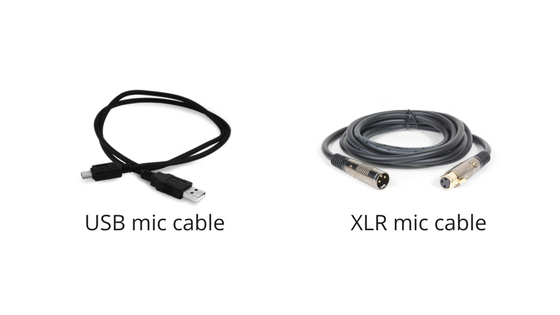
USB microphones are the most convenient way to record a podcast. Simply connect them to the USB port on your computer and press record — no additional gear required. Yet while USB microphones offer an easy, plug-and-play solution for podcasting, they don’t provide the versatility required to pull off larger productions. For that, you’ll need an XLR microphone.
XLR microphones have an analog output, as opposed to the digital output of USB, which means they require a recording interface to record to your computer. But analog outputs can connect to external audio gear like mixers, which allow you to balance the level of multiple microphones when recording live, and utilize pre-amps if necessary to boost the gain at source.
Microphone Features
Once you decide whether you’ll be using a USB or XLR, choosing the right mic all comes down to features. The most important feature of a podcasting microphone is the polar pattern. Polar patterns pick up what a microphone can “hear.” Some microphones have a fixed polar pattern, while others can select between multiple patterns.
Cardioid polar patterns are typically best for recording single voices as they offer the most noise rejection. Bi-polar, or bi-directional, pickup patterns are great for recording interviews as they capture sound from the front and back of the microphone. Omnidirectional pickup patterns capture sound from all directions, which is great for recording a large group of people, but it often captures a lot of ambient noise.
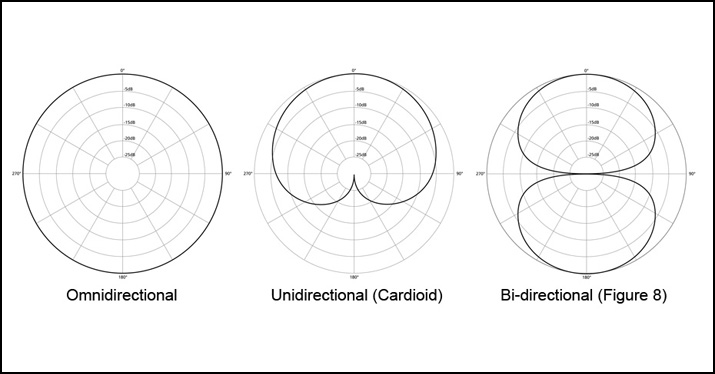
Many microphones also feature built-in “roll off” switches, which filter out unused bass frequencies to prevent unwanted noise. Another common feature is a pad, which lowers the input volume of the microphone. This can be very useful when dealing with particularly boisterous speakers who tend to clip the microphone even at low gain levels.
Okay, enough chit-chat. Let’s get to the microphones!
USB Microphones
Blue Yeti

The Blue Yeti is the most popular USB microphone currently on the market. With a built-in headphone jack, on-board volume controls, and a dedicated mute button, the Blue Yeti is an all-in-one professional podcasting solution. Capture the perfect sound in any situation with four selectable polar patterns.
Yeti is also available in the Blue Yeti Podcaster Bundle, which includes Hindenburg Journalist — an innovative digital audio workstation designed specifically for podcasters. For the authentic radio experience, try the Yeticaster bundle, which includes a shock mount and microphone boom arm for broadcast-style mic mounting. And if you’re looking for something small and sleek to sit on your desk and stay out of your way, check out the pint-sized Yeti Nano.
Heil PR-40
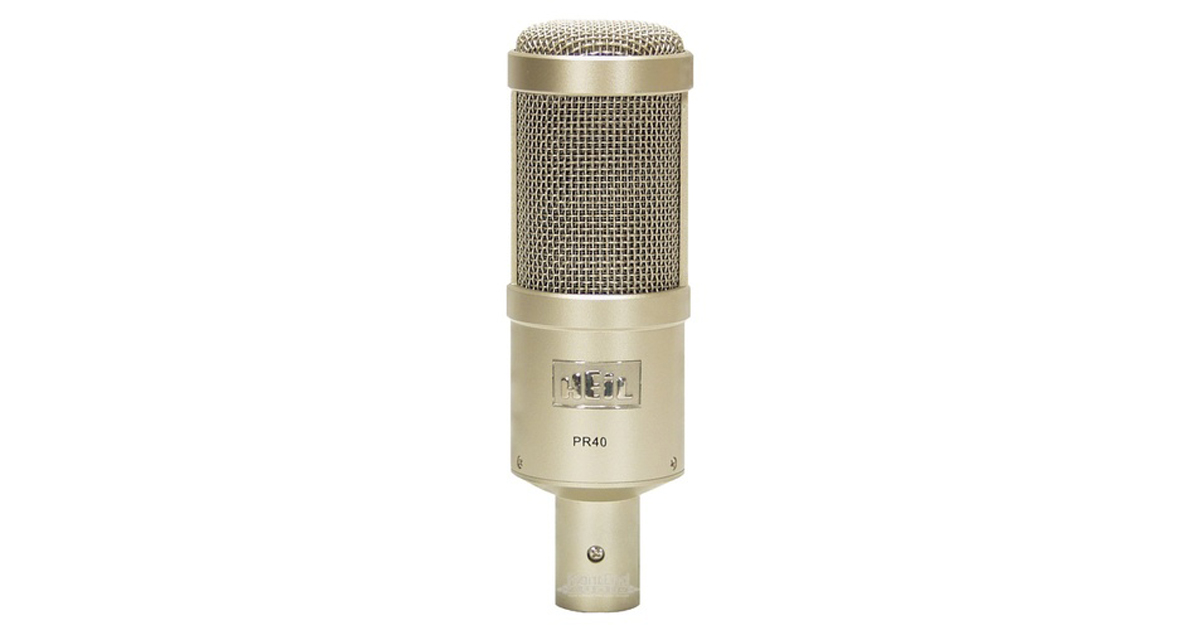
While the PR-40 looks like a traditional condenser mic, it’s actually a dynamic microphone, which makes it an excellent choice for podcasting. Dynamic microphones are less sensitive than condenser microphones and capture less ambient noise. The PR-40’s fixed cardioid pickup pattern further helps reduce background noise for a crystal-clear broadcast. With an internal shock mount, the PR-40 is fully protected from handling noise, while the dual mesh filters prevent plosives. An extended frequency range helps capture that classic “radio voice” sound.
Røde Podcaster
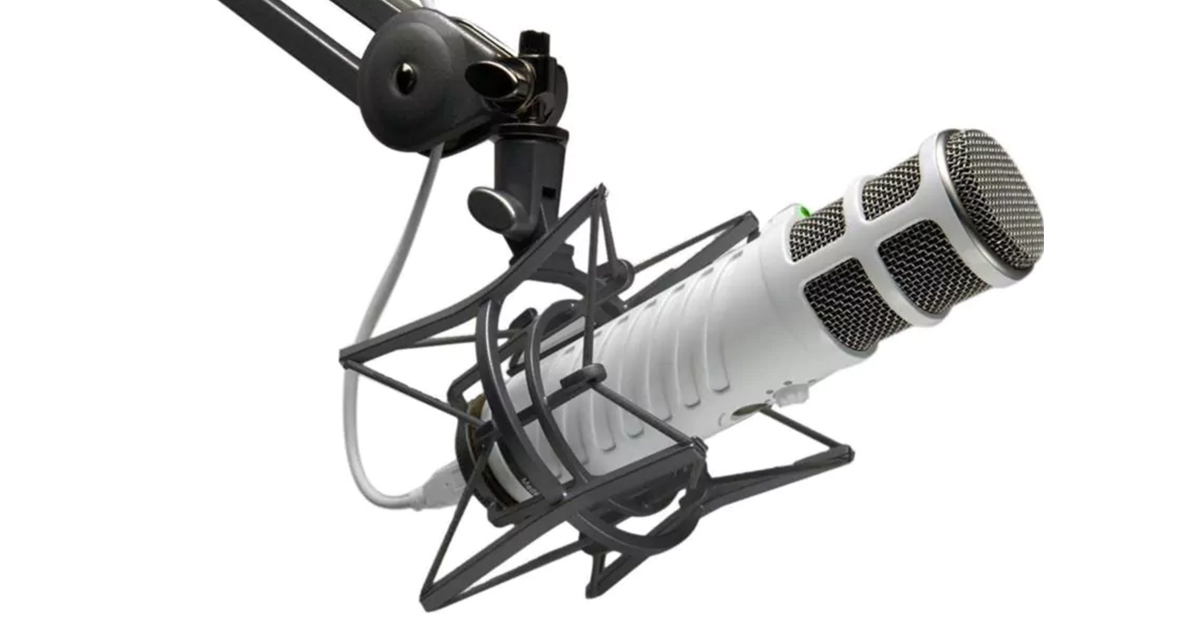
The Røde Podcaster is a dynamic microphone specifically designed for podcasters. With a tight polar pattern and frequency response custom-tuned for recording vocals, the Podcaster delivers broadcast-quality sound with a plug-and-play USB connection. An internal shock mount helps reduce noise when adjusting microphone placement. Equipped with a 3.5mm stereo headphone output and built-in volume control, the Podcaster has everything you need to get started quickly.
And if you prefer analog microphones, Røde offers a similar design with an XLR connection called the Procaster (shown above).
Samson Go Mic
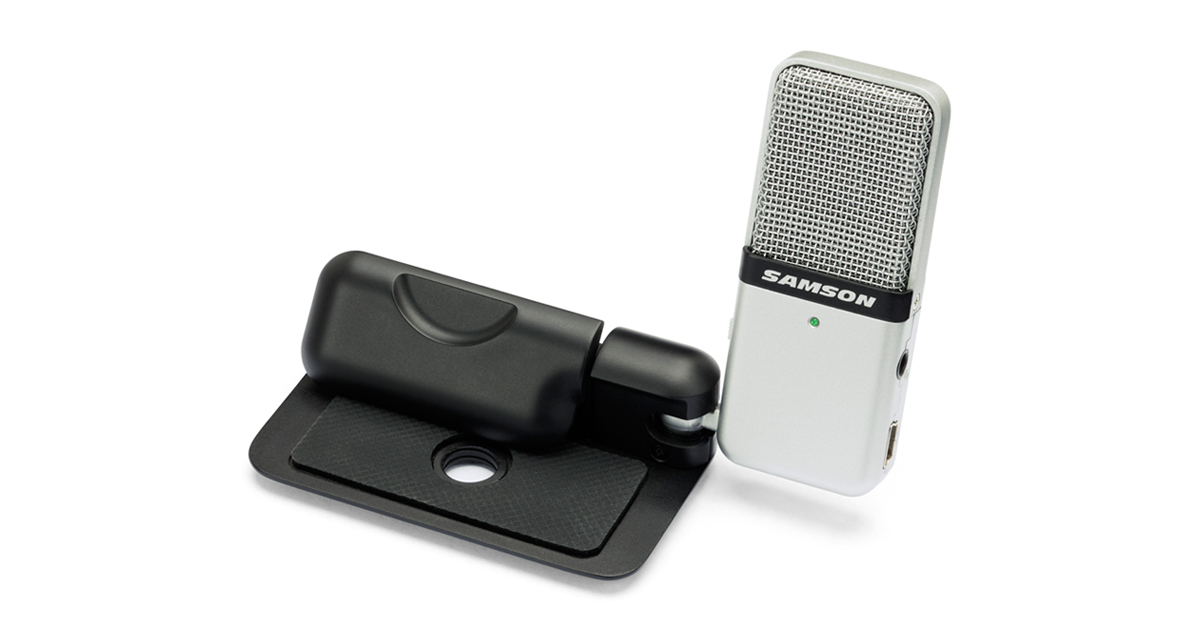
The Samson Go Mic features a compact design with a custom mount designed to clip directly to your laptop. Choose between cardioid and omnidirectional pickup patterns for solo recording or interviews. Perfect for recording on-the-go, just connect Samson Go to your Mac or PC via USB and press record!
XLR Microphones
Shure SM7b
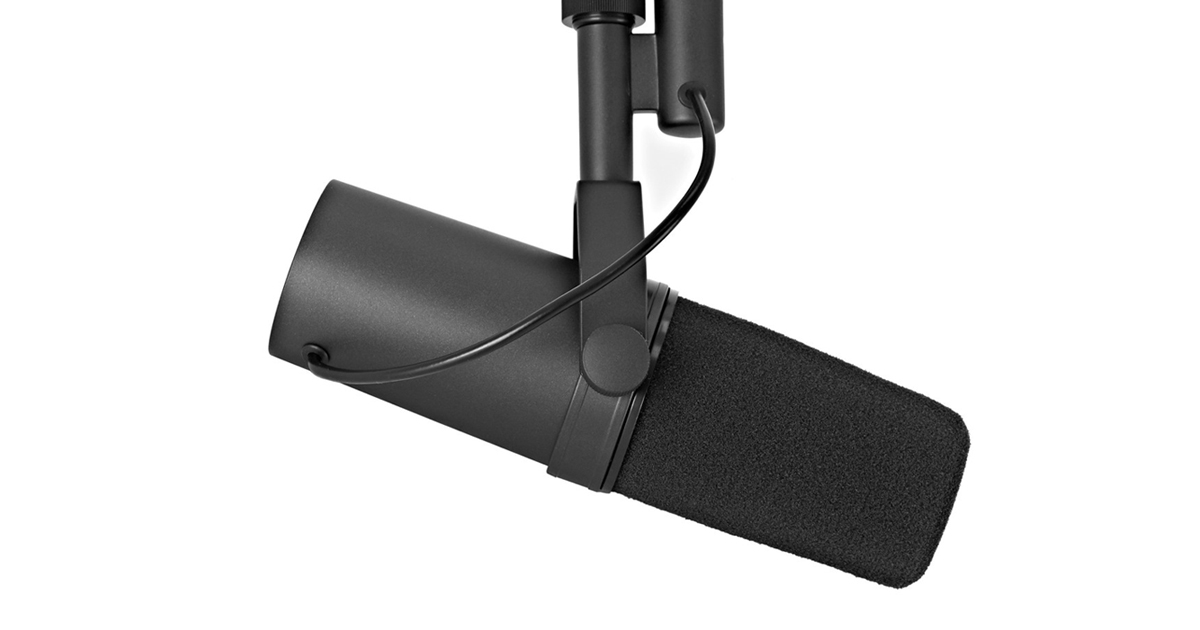
The Shure SM7b is a classic broadcast microphone. Used in radio stations all over the world, this large diaphragm dynamic microphone is known for its smooth, warm sound. With built-in tone controls, the SM7b lets you fine-tune the sound of your voice right at the source. An internal shock mount and pop filter prevent mechanical noise as well as plosives. And the built-in swivel mount makes finding the perfect mic placement a breeze.
Electro-Voice RE-20
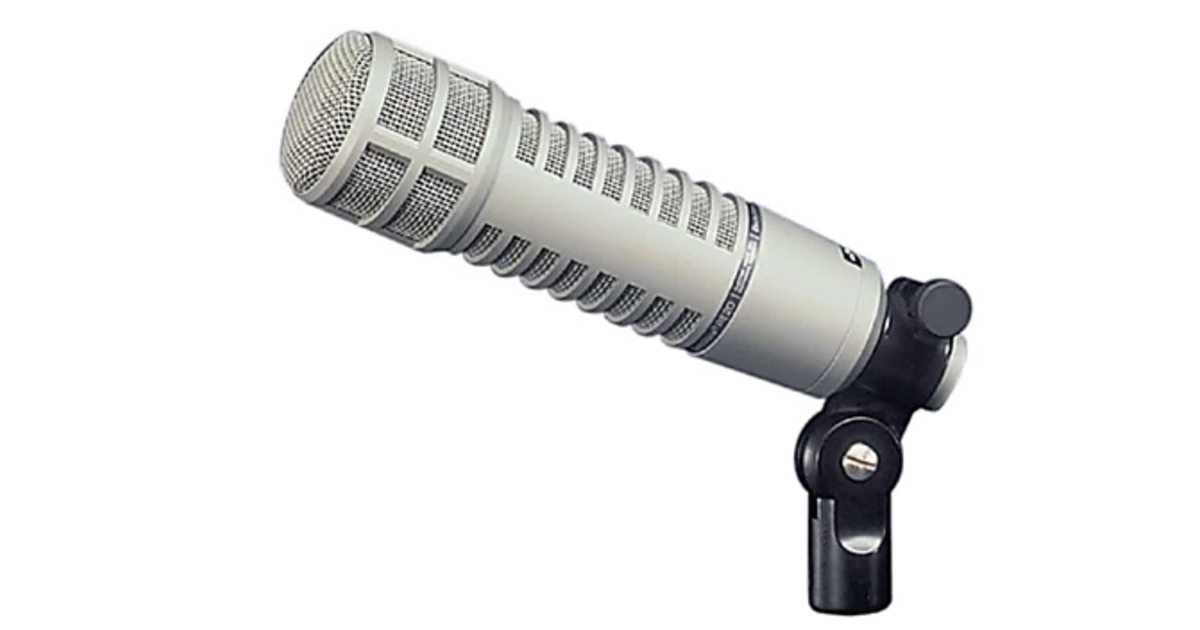
Before the SM7b became the quintessential radio microphone, the RE-20 was the go-to microphone for broadcasters. Also a large diaphragm dynamic microphone, the RE-20 features an extended frequency range that beefs up vocals with extra bass. A built-in high-pass filter helps prevent muddiness and maintain intelligibility, while the fixed cardioid pickup pattern helps eliminate room noise.
Audio-Technica AT2020

The Audio-Technica AT2020 is a condenser microphone with studio-quality sound and an affordable price tag. Specifically designed for recording vocals, the AT2020 features an extended frequency response designed to emphasize clarity and detail. The fixed cardioid pickup pattern offers improved isolation for recording in noisy environments.
Remember, no two voices sound exactly the same. So try out a few of these mics and see which one works best for your voice (and your guests)!
Want more?
Continue learning with hundreds of lessons on songwriting, composing, home recording, electronic production, beat making, and much more. Explore Soundfly’s exciting courses like Modern Pop Vocal Production, Unlocking the Emotional Power of Chords, and Kimbra: Vocal Creativity, Arranging, and Production.
